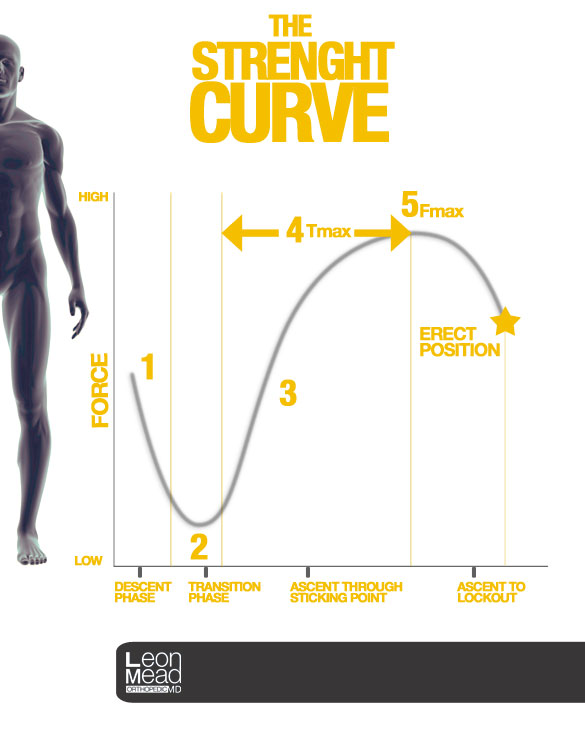Sports Medicine: The Strength Curve
You breathe in and out. Your heart beats. You rear back and down, you squat down and stand back up. Your foot hits the ground and your knee bends in preparation for the next push-up in running or walking. This is movement, and we define it by the amount of force produced. Producing force requires strength. The diagram that best represents movement is the one you see above. This is what biological life is all about. We do nothing else with our musculoskeletal sleeves. It is called the strength curve and is virtually found everywhere. This is the flow:
- This is the beginning of your movement. Your rear back to throw, your foot hits the ground and your knee bends, or you squat down to jump. All involve eccentric strength.
- You make the transition from backward to forward, from up to down. Static strength is required. This is called the amortization phase of a movement.
- Force is applied in hitting, throwing, jumping or the pus-up in each running step. This is called concentric strength.
- It usually takes a fraction of a second to exert any give amount of force in any given movement.
- This is the maximum amount of force you impart in your movement.
Sports Medicine: The Strength Curve | Orthopedic Corner | Leon Mead MD Orthopedic Doctor | 730 Goodlette Road North, Suite 201 Naples Florida 34102 | Phone: (239) 262-1119


